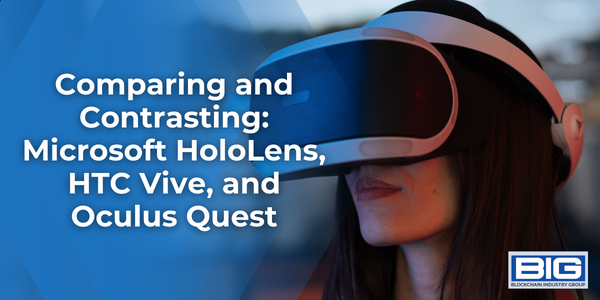
Virtual reality (VR) and augmented reality (AR) technologies have witnessed significant advancements in recent years, offering users immersive and interactive experiences. Among the leading players in this domain are Microsoft HoloLens, HTC Vive, and Oculus Quest.
In this comprehensive article, we will compare and contrast these three platforms, exploring their advantages and disadvantages. From the technology behind each device to their applications and user experiences, we will examine the key features that set them apart and shape the future of virtual reality.
Microsoft HoloLens: Merging Reality and Virtuality
Microsoft HoloLens is an augmented reality headset that blends digital content with the real world. It overlays holographic objects onto the user’s field of view, allowing for interactive and spatial computing experiences. Some advantages of HoloLens include:
- Mixed Reality Capabilities: HoloLens seamlessly merges virtual objects with the physical environment, enabling users to interact with holograms while maintaining awareness of their surroundings. This provides unique possibilities for industrial applications, such as remote collaboration, training, and visualization.
- Holographic Development: HoloLens offers developers a robust platform for creating holographic experiences. With tools like Unity and Visual Studio, developers can build applications that utilize spatial mapping, gesture recognition, and voice commands. This encourages the growth of a diverse ecosystem of augmented reality content.
- Limitations in Field of View: One notable disadvantage of HoloLens is its limited field of view. The holographic content appears within a small window, which can sometimes break the illusion of immersion. Users may experience a “tunnel vision” effect, reducing the sense of presence in the virtual world.
HTC Vive: Immersive Virtual Reality Experiences
HTC Vive is a virtual reality system that offers high-fidelity immersive experiences through its headset and motion-tracked controllers. Here are some advantages and disadvantages of the HTC Vive:
- Room-Scale VR: The HTC Vive excels in providing room-scale VR experiences, allowing users to physically move within a designated area and interact with the virtual environment. This enhances immersion and enables more natural interactions with digital content.
- Precise Tracking: The Vive’s base stations provide accurate tracking of the headset and controllers, offering a high level of positional precision. This allows for realistic interactions and precise gameplay experiences.
- External Sensor Setup: One of the drawbacks of the HTC Vive is its reliance on external sensors. Setting up the base stations can be time-consuming, and the need for physical sensor placement may limit portability and ease of use compared to other VR systems.
Oculus Quest: Wireless Freedom and Standalone VR
The Oculus Quest is a standalone virtual reality headset that combines the power of a PC-based system with the convenience of wireless and portable design. Consider the following advantages and disadvantages of the Oculus Quest:
- Standalone and Wireless: The Oculus Quest offers the freedom of standalone VR, eliminating the need for external sensors or a PC connection. Users can enjoy immersive experiences without being tethered to a computer, providing greater flexibility and portability.
- Hand Tracking: The Quest introduced hand tracking technology, enabling users to interact with virtual objects using their hands without the need for controllers. This enhances the sense of immersion and simplifies the user experience.
- Limited Processing Power: As a standalone device, the Oculus Quest has limited processing power compared to PC-based VR systems like the HTC Vive. This can result in slightly lower graphical fidelity and performance for more demanding VR experiences.
Decentraland: Groundbreaking Digital Frontier and Major Partnerships
—
Fortnite: Redefining Gaming and Forging the Digital Frontier
—
Metaverse: The Immersive Benefits of a Virtual World
Conclusion: Advancements and Trade-Offs in VR Technology
Each platform – Microsoft HoloLens, HTC Vive, and Oculus Quest – offers distinct advantages and trade-offs in the world of virtual reality. The choice between these platforms depends on the specific needs, preferences, and use cases of users and industries.
As VR technology continues to advance, it is likely that we will see further improvements in spatial computing, tracking accuracy, wireless capabilities, and processing power across all platforms. These advancements will continue to shape the future of virtual reality, creating even more immersive and interactive experiences and opening up new possibilities for industries, entertainment, and human-computer interaction.



